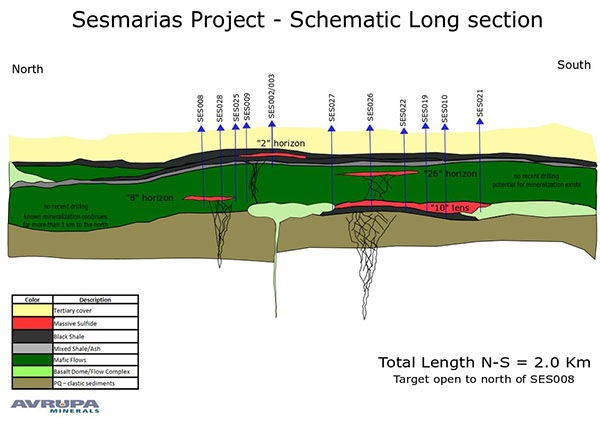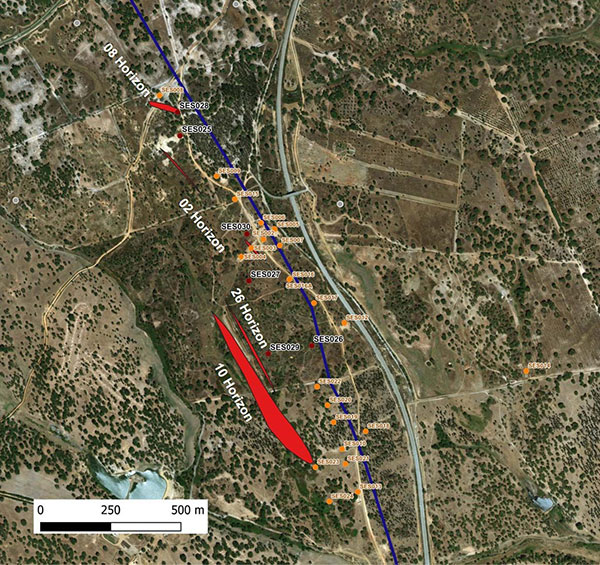
Avrupa Minerals (AVU.V) has completed a 2,498 meter, six-hole drill program on the Sesmarias zone which is part of its Alvalade Project in Portugal. The assay results will be out in a few weeks, but the first interpretations of the drill results are interesting.
First of all, the technical data from the new drill holes has helped and will continue to help Avrupa to target the mineralized zones at Sesmarias. The recently completed six holes were meant to drill-test a new geological model, and that new model seems to have been proven right after discovering the footwall feeder zone stockwork for the 8-lens, intercepting a sulphide zone above the 10-lens which could indicate the presence of a completely new lens or horizon closer to surface, as well as intercepting the 10 Lens where it was supposed to be.
But what intrigued us the most was the substantial expansion of the so-called 10 Lens. Previously, Avrupa had estimated the strike length of this lens to be approximately 300 meters, but the recent drill program has now doubled the strike length to at least 600 meters. That’s important, as this makes for a very juicy tonnage target given the width (up to 400 meters) and thickness (25 meters). We obviously cannot use the 400 meter width over the entire 600 meter strike length, but if we would assume an average width of 250 meters (the length:width ratio was 2:1 at the past-producing Lousal mine, so we are applying a slightly more conservative ratio) and a density of 4 tonnes per cubic meter (which is also on the lower end of a specific gravity range of 4-4.4), the 10-lens by itself already represents a total tonnage of 15 million tonnes. So the size of the sulphide lens is excellent, so we are anxiously awaiting the assay results to see what kind of grade Avrupa was able to pull out of the ground.

In any case, the recently completed drill program is an important step forward for the company, as it was designed based on a re-interpretation of the older drill holes on the Sesmarias project. After re-logging old core, Avrupa wanted to define mineralized target horizons in the specific Volcano-Sedimentary rocks which have been known to host substantial copper-zinc targets throughout the Iberian Pyrite Belt (the Neves Corvo mine operated by Lundin Mining (LUN.TO) would be a good example of this type of deposit). The re-logged core now indicates the potential strike length of the Sesmarias mineralization to be 2.5 kilometers. Of course, this doesn’t mean the entire strike length will be properly mineralized nor that the lenses contain economic-grade material. But it is a geological interpretation that could be of specific interest of the larger companies that have taken great interest in the Iberian Pyrite Belt. And perhaps it will put some more pressure on the ‘large North American mining company’ Avrupa announced in March last year to effectively execute on the joint venture.
The assay results should be out by the end of this month, and the timing could be excellent given PDAC will be around the corner by the time the results will be published.
Go to Avrupa’s website
The author has a long position in Avrupa Minerals. Avrupa is a sponsor of the website. Please read the disclaimer

